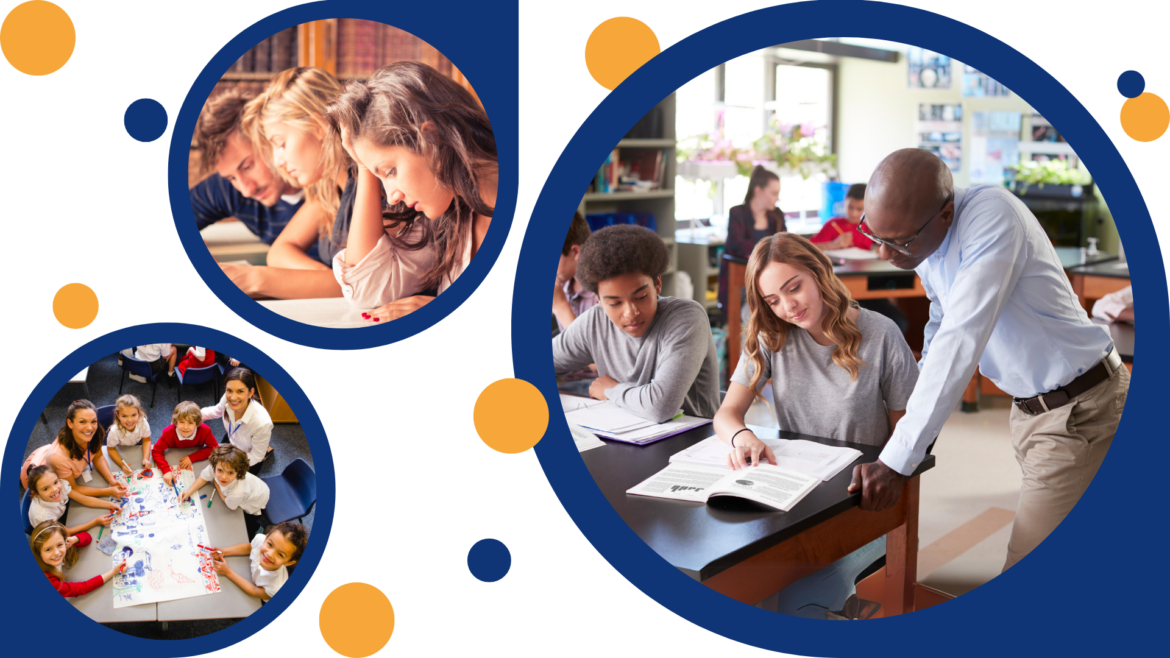Are you looking to reach every student in your diverse classroom? Do you sometimes feel overwhelmed trying to meet the varied needs of all your learners? You’re not alone. Many educators face this challenge daily. The good news is that Universal Design for Learning (UDL) and Differentiation offer powerful solutions. These approaches can help you create a learning environment where every student has the opportunity to thrive. Let’s explore how these strategies can transform your teaching and make your classroom more inclusive and effective for all learners.
Understanding UDL and Differentiation
| Universal Design for Learning (UDL) | Differentiation |
|---|---|
| Definition: A proactive approach to designing inclusive learning experiences | Definition: A responsive approach that tailors instruction to meet individual student needs |
| Analogy: Building a ramp instead of stairs – accessible for everyone from the start | Analogy: Customizing the interior of a building to suit specific requirements |
Key Principles:
|
Areas for Differentiation:
|
| Timing: Implemented during lesson planning, before instruction begins | Timing: Applied during instruction, in response to observed student needs |
| Focus: Designing a flexible curriculum that can accommodate diverse learners | Focus: Adapting teaching methods to address specific student strengths and challenges |
Why Use UDL and Differentiation Together?
Universal Design for Learning and Differentiation, while powerful on their own, become even more effective when used in tandem. By combining these approaches, educators can create a learning environment that is both proactively designed to be accessible and responsive to individual student needs. This synergy allows teachers to address the diverse learning needs of their students more comprehensively than either approach could achieve alone. The flexibility of UDL provides a foundation that makes differentiation easier to implement, while the targeted nature of differentiation helps fine-tune the inclusive framework established by UDL principles.
Combining these approaches creates a powerful toolkit for inclusive education:
- UDL sets the stage for accessibility
- Differentiation fine-tunes the learning experience
- Together, they address both group and individual needs
Implementing UDL and Differentiation in Your Classroom
| STEP 1: Start with UDL |
STEP 2: Apply Differentiation |
|---|---|
Design diverse materials:
|
Assess ongoing needs:
|
Plan for engagement:
|
Adjust instruction:
|
Practical Tips for Success
Implementing UDL and differentiation in your classroom doesn’t have to be overwhelming. By starting small and gradually expanding your approach, you can create a more inclusive learning environment over time. The following tips are designed to help you integrate these strategies into your teaching practice effectively and sustainably. Remember, the goal is progress, not perfection. As you experiment with these techniques, you’ll discover what works best for you and your students, leading to a more dynamic and responsive classroom.
- Begin with small steps: Implement one UDL principle or differentiation strategy at a time
- Use technology wisely: Explore assistive tools and adaptive software
- Collaborate with colleagues: Share ideas and resources
- Gather feedback from students regularly: Use their input to refine your approach
- Conduct ongoing assessments: Inform your differentiation decisions with current data
- Practice flexible grouping: Mix whole class, small group, and individual instruction
- Reflect and adjust: Evaluate your strategies and be willing to make changes
Overcoming Common Challenges
While implementing UDL and differentiation can greatly enhance your teaching, it’s natural to encounter some obstacles along the way. Recognizing these common challenges is the first step in addressing them effectively. The following strategies can help you navigate potential hurdles, ensuring that you can successfully integrate these approaches into your classroom practice, regardless of constraints or limitations.
- Time constraints: Build a resource bank over time and start small, gradually expanding.
- Limited resources: Advocate for professional development and seek out free online tools and materials.
- Large class sizes: Implement peer tutoring and use station rotation models.
- Balancing individual needs with standards: Focus on core concepts and provide multiple paths to meet objectives.
Taking Action in Your Classroom
Now that you’re familiar with UDL and differentiation, it’s time to put these concepts into practice. Remember, transforming your classroom into a more inclusive learning environment is a journey, not a destination. Start with small, manageable steps and gradually build on your successes. The following action steps will help you begin implementing these strategies in your classroom, allowing you to see firsthand how they can benefit your students and enhance your teaching practice.
- Analyze your current teaching approach: Identify areas where you’re already using UDL or differentiation and spot opportunities for improvement.
- Set realistic goals: Choose one UDL principle to focus on this week and select a differentiation strategy to try in your next lesson.
- Measure your progress: Keep a teaching journal and ask for student feedback.
- Share your experiences: Discuss successes and challenges with colleagues and contribute to professional learning communities.
Remember, creating an inclusive classroom is an ongoing process that requires patience, flexibility, and a willingness to learn. Every step you take towards implementing UDL and differentiation is a step towards better serving all your students. As you continue to refine your practice, you’ll likely find that these approaches not only benefit your students but also reinvigorate your own passion for teaching. The diverse strengths and needs of your students can become a source of creativity and innovation in your instructional methods.
Are you ready to transform your classroom? Start by choosing one strategy from this post to implement in your next lesson. Whether it’s a UDL principle or a differentiation technique, take that first step towards creating a more inclusive learning environment. Share your experiences, celebrate your successes, and learn from the challenges. Together, we can create classrooms where every student has the opportunity to thrive and reach their full potential.

